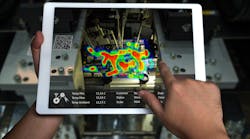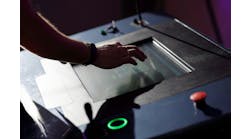As production has ramped up in a post-COVID world, companies are reacting to the difficulty of bringing staffing up to pre-pandemic levels. Who would have thought that the same people we employed before the crisis wouldn’t come back when life returned to normal?
For many companies, life isn’t normal, or there is a new normal. One reality that came into view during the hard times was how much we, as a society, rely on ready-made food via restaurants, fast-food chains and kiosks.
Suddenly, when face-to-face contact was banished for the greater good, we were presented with the task of figuring out how to feed ourselves. This seemed like such a preposterous situation, but we were faced with changing from the boxed supper as a once-in-a-while convenience to teaching ourselves how to cook nutritious meals at home.
My employer provided a key food source during a time when restaurants were closed and people were forced to cook at home. This need helped us to sustain our staffing levels for a while, but little by little the workforce started dissipating to a point where we were having trouble manning production lines.
Coincidentally, other manufacturers were feeling the same pinch and the supply lines started to get strung out. This meant we couldn’t run some of the lines due to material shortages.
The disappearing workforce and dwindling supply lines also greatly impacted the automation industry. In the absence of key elements used in the production of computer chips, many original equipment manufacturers (OEMs) had to suspend the production of key components used to produce control systems. Machine builders and end users alike have had to come up with new ways to keep moving forward.
One surprising shortage that I stumbled upon was the normally open contact block on the back of a 22-mm push button. I could understand the delay in the shipping of items such as programmable controllers, human-machine interfaces (HMIs) and drives, but a contact block? It’s strange how seemingly unrelated items could be impacted by this global experience.
The inspiring part of the past few years has been the innovative ways people have overcome adversity. My automation team at work recently participated in a factory acceptance test (FAT) for some new case-packing equipment, and we were lucky enough to be able to visit two other manufacturers in the area.
One key takeaway from these visits was the way the management groups at all three companies had the foresight to realize that components could get scarce, and they made huge investments to make sure they had parts on-hand to carry them through what, at that time, was an unknown period of hampered supply lines.
We are learning, across the industry, that, just because we declared the end of the pandemic, it doesn’t mean that everything is back to normal. We continue to experience long lead times, and those companies that stocked up on even the most basic items are able to keep near-normal delivery expectations, despite the challenges the rest of the industry is experiencing.
Many machine builders have taken this lull in the usually full-speed-ahead mentality to identify elements of automation that can enhance the user experience. I’ve previously noted the focus on software platforms and utilizing big-data development to provide corporations with better decision-making tools, but it is the end-user experience that is, from my point of view, seeing the best improvements as we pull ourselves out of the cloak of darkness over the past few years.
There is a trend, all across the industry, to re-evaluate the core product offerings and take more time to make those traditional best sellers more appealing to the purchaser. The mindset, and there are a lot of positives to this vision, is to do what you do very well and expect them to come back for more. My team saw many examples of this principle in our visit to Minnesota recently.
One machine builder, Delkor Systems in St. Paul, Minnesota, pared its equipment offerings down to a core competency and unitized its designs. By this, I mean the company broke its machines down into building blocks where each segment has the same footprint.
From a manufacturing standpoint, it can streamline production by making many frames in advance, adding the specifics to the controls for each functional stage as it brings these to assembly.
For the end user, you have a product where you can estimate the required footprint very early in the concept stage of the project. The OEM also recognized a base machine segment, if you will, that can be accessorized to do a great many things.
The value is the end user can confidently purchase a machine that might do specific functions but can be retrofitted down the road to perform different specifics if the current product or purpose changes. For a co-packer, this feature is hugely attractive as we hope to run a product for a long period of time, but we are really at the mercy of our client.
Needs change, products gain and lose interest over time, and a machine that is flexible enough to be capable of refitting without tossing the whole machine out is a very valuable capital investment.
Another machine builder on our tour, Massman Automation in Villard, Minnesota, approached its machine building by the keep-it-simple philosophy. While it has a large product offering, we witnessed similar technologies and control designs used across these seemingly dissimilar applications.
Aside from the obvious shared-hardware and shared-software elements, this OEM focused its efforts on improving the experience for the operators and maintainers of the equipment. Who hasn’t gone to work on some equipment only to find out that the machine was designed to be easy to assemble but not to pull apart to change out a component while laying on your back in poor lighting with dissimilar mounting hardware on the very same component?
We witnessed a machine that utilized bright, LED lighting that not only lit up the interior of the machine for setup/maintenance/operation but also doubled as the signal light for the machine. The lights would be bright white when a door was open but would go to yellow when the guards were closed, green when the machine was running and red when there is a fault.
Every machine being assembled on the production floor, regardless of function or intended use, employed this very same lighting feature. Likely the least costly item on the machine from a control-design viewpoint, the use of on-machine lighting enhanced the experience for many people who would interact with this piece of equipment.
Our final visit of a long, three-day adventure was to Douglas Machine in Alexandria, Minnesota, a machine builder that always seems to be riding the crest of the wave when it comes to the deployment of new technology. I often think it is just ahead of that wave as it invests a great deal of time and effort, not to mention money, into embracing emerging technology that really hasn’t caught on outside of the imagination of some visionaries. I liken this to the folks at a famous theme park who bring things to life that we didn’t even know we needed.
Like the previous two OEMs, this one has made use of the operator station—the HMI—to make operation and troubleshooting the machine like navigating a smart phone. There is literally no need to open a control panel to see what is going on within. What was unique was the first real-life deployment, in my experience, of a tablet to provide a guided walkthrough of the machine.
This interaction didn’t use augmented reality, but it is surely on the doorstep. What we did see was an interactive guide to changing over a machine. Supplemented with pictures and sometimes video, the tablet guided the user, step by step, through the entire changeover process. Product-based, this guide prompted the user to make a change and then click a button on the screen to indicate that the step had been completed. Each step starts out grey and turns to a green check mark when the step is complete. The pictures show the operator a real-life view of the machine to help pinpoint the change, further enhancing the process. If this tablet is connected to the plant network, this same interface can be used to contact the OEM and work through issues in real-time, using the built-in camera on the device.
I should also mention a fourth machine builder, Iris Factory Automation in Aurora, Illinois, which we recently visited for yet another FAT. This OEM is very much in tune with the aesthetics of design. Everything looks right and true and is eye-appealing. Not to be outdone by the others, this machine builder has taken the tablet experience one step further. On the HMI application, one can scan a QR code that leads directly to the OEM’s support page on the website. In the near future, using your smart phone to scan the QR code will lead directly to an online support technician who can interact with you in real time, to diagnose your issue and get resolution on the spot.
In all of these examples, the machine builders reacted to what seemed like limitations imposed by a pandemic and used that time to brilliantly enhance the user experience.
In times of adversity, there are those who rise to the top, and, happily, there are examples of that all around us.





